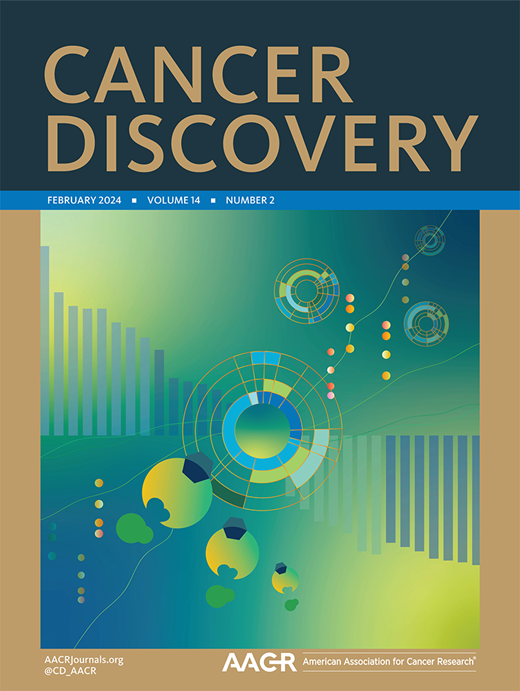表观遗传和转录程序定义骨肉瘤亚型并建立可靶向的脆弱性。
IF 33.3
1区 医学
Q1 ONCOLOGY
引用次数: 0
摘要
骨肉瘤是一种基因组复杂的肿瘤,其特征是广泛的结构重排。这种复杂性限制了基于肿瘤发生分子机制的治疗策略的发展。我们假设表观遗传机制可以驱动不同亚型的骨肉瘤。通过分析染色质可及性,我们确定了“早期成骨细胞衍生”(EOD)细胞状态,其特征是与早期骨发育相关的转录因子上调,以及“晚期成骨细胞衍生”状态(LOD),其特征是与晚期骨发育相关的基因上调。然后,我们定义了在这两种细胞状态下控制潜在基因表达程序的核心调控电路。多组学单细胞分析表明,这些细胞状态在单个肿瘤中共存。最后,使用一组患者来源的异种移植模型,我们确定了依赖于这些细胞状态的不同药物反应。这些发现为骨肉瘤治疗开发新的联合治疗策略创造了机会,并强调了在高度基因组复杂的癌症中定义表观遗传亚型的价值。本文章由计算机程序翻译,如有差异,请以英文原文为准。
Epigenetic and transcriptional programs define osteosarcoma subtypes and establish targetable vulnerabilities.
Osteosarcoma is a genomically complex tumor characterized by widespread structural rearrangements. This complexity has limited development of therapeutic strategies informed by molecular mechanisms of oncogenesis. We hypothesized that epigenetic mechanisms could drive distinct subtypes of osteosarcoma. Through analysis of chromatin accessibility, we identified an "early osteoblast-derived" (EOD) cell state characterized by upregulation of transcription factors associated with early bone development, and a "late osteoblast-derived" state (LOD), characterized by upregulation of genes involved in late bone development. We then defined core regulatory circuitries governing the underlying gene expression programs in these two cell states. Multiomic single-cell analysis indicates that these cell states co-exist in a single tumor. Finally, using a panel of patient-derived xenograft models, we identified differential drug responses dependent on these cellular states. These findings create opportunities for developing new combination therapy strategies for osteosarcoma treatment and underscore the value of defining epigenetic subtypes in highly genomically complex cancers.
求助全文
通过发布文献求助,成功后即可免费获取论文全文。
去求助
来源期刊

Cancer discovery
ONCOLOGY-
CiteScore
22.90
自引率
1.40%
发文量
838
审稿时长
6-12 weeks
期刊介绍:
Cancer Discovery publishes high-impact, peer-reviewed articles detailing significant advances in both research and clinical trials. Serving as a premier cancer information resource, the journal also features Review Articles, Perspectives, Commentaries, News stories, and Research Watch summaries to keep readers abreast of the latest findings in the field. Covering a wide range of topics, from laboratory research to clinical trials and epidemiologic studies, Cancer Discovery spans the entire spectrum of cancer research and medicine.
 求助内容:
求助内容: 应助结果提醒方式:
应助结果提醒方式:


